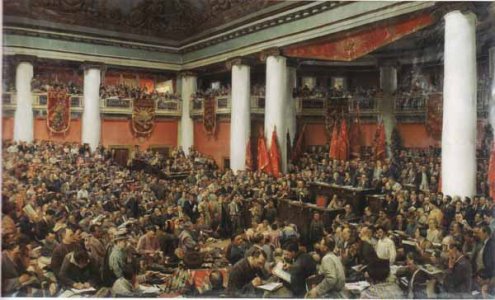
This year marks the 100th anniversary of the Fourth Congress of the Communist (Third) International (also known as the Comintern), held from 30 November – 5 December 1922, in Moscow. Leon Trotsky, co-leader, along with Lenin, of the 1917 October revolution, summarised the Fourth Congress, in his work, The Evolution of the Comintern (1936), as follows:
“The Fourth Congress (1922) reaffirmed the lessons of the Third Congress and dealt with them more thoroughly and concretely. The NEP (New Economic Policy) of the Soviet Union, following on “War Communism,” which had to be introduced under the pitiless pressure of circumstances, supplied the immensely important experience of necessary tactical retreats even after the winning of power, an experience which most probably will have its validity not only for backward Russia, but also for more advanced countries.
The Fourth World Congress was able to look back on tremendous organizational results. In the course of three years, in all continents and in practically all countries, sections had been created, and apart from this, the Red International of Trade
Unions and the Young Communist International had been built up. The Communist parties in a number of countries were at that time leading mighty revolutionary mass actions.”
However the Fourth Congress was also the last congress to be held before the onset of Stalinist reaction that would eventually strangle all genuine workers’ democracy in the Soviet Union and Communist International.
Trotsky explained: “To the extent that the German defeat had weakened the positions of the international proletariat and of its vanguard, to the same extent it acted to strengthen the tendencies of the Soviet bureaucracy to become an independent force. This accounts for the fact that the Fifth World Congress of the Comintern (1924) signifies above all the subjection of the Comintern to the yoke of the Russian bureaucracy. The Comintern itself became bureaucratised and was brought into complete dependence on the bureaucratic centre in Moscow.”
Below is a link to The Evolution of the Comintern (1936), by Trotsky.
The Rise and Fall of the Communist International – Socialist Party
Key documents from the Fourth Congress which are are still very relevant to the work of Marxists and socialists today: History of the Communist International (marxists.org)

